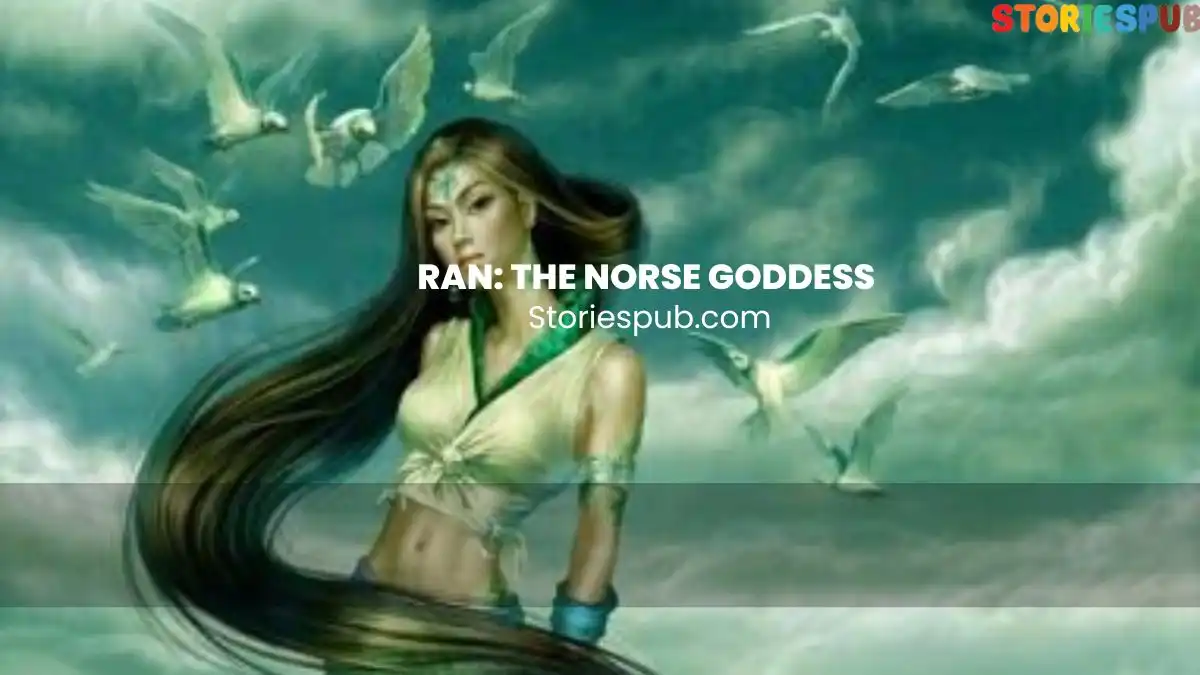
Ernest Hemingway, an indelible name in the annals of American literature, stands as an iconic figure whose profound impact continues to reverberate through the ages. His literary prowess, coupled with a distinctive writing style, has left an indelible mark on the literary world, shaping the way stories are told and emotions are woven into words. This exploration delves into the life, achievements, and contributions of this literary luminary, unraveling the threads that make up the tapestry of his legacy.
Hemingway’s name evokes a sense of adventure, introspection, and raw emotion. His minimalist prose, characterized by its crispness and economy of words, revolutionized the art of storytelling.
Known for his ability to evoke complex emotions with simplicity, Hemingway captured the human experience in its raw authenticity. As we journey through the various facets of his life and works, we will navigate the landscapes he traversed, the battles he fought, and the emotions he etched onto the pages.
In the following sections, we will delve into Hemingway’s early life and the influences that shaped his creative spirit. We will explore the nuances of his writing style, a technique that became a hallmark of his legacy.
We will traverse the landscapes of his notable works and the cultural impact they have left behind. As we seek to understand why Hemingway’s writing is revered, we will uncover the reasons behind his Nobel Prize recognition and the novel that earned him this prestigious accolade.
Ernest Hemingway’s journey is one of unwavering dedication to the craft of words, an exploration of the human soul, and an ode to the complexities of existence. His legacy, like his prose, remains etched in the pages of literary history, inviting us to unravel the layers of meaning and emotion that lie beneath the surface.
Join us as we embark on a literary odyssey to uncover the essence of Ernest Hemingway’s extraordinary life and enduring contributions to the world of letters.
Personal and Professional Details
| Personal Details | Professional Details |
| Full Name: Ernest Miller Hemingway | Occupation: Writer, Journalist |
| Birth: July 21, 1899 in Oak Park, Illinois, USA | Notable Works: “The Old Man and the Sea,” “A Farewell to Arms,” “The Sun Also Rises” |
| Death: July 2, 1961 in Ketchum, Idaho, USA | Writing Style: Minimalism, Iceberg Theory |
| Spouse: Hadley Richardson, Pauline Pfeiffer, Martha Gellhorn, Mary Welsh Hemingway | Literary Themes: War, Love, Human Condition |
| Children: Jack, Patrick, Gregory, Joan | Nobel Prize: Awarded the Nobel Prize in Literature in 1954 |
| Famous Quote: “The world breaks everyone, and afterward, some are strong at the broken places.” | Contributions: Influenced modern literature, pioneered new narrative techniques |
| Notable Traits: Adventurous, Intense, Artistic | Legacy: A key figure in the “Lost Generation” of writers |
| Interests: Fishing, Hunting, Traveling | Influence: Impact on generations of writers and literary discussions |
| Notable Associations: F. Scott Fitzgerald, Gertrude Stein, Ezra Pound | Innovations: Redefined storytelling, introduced new writing techniques |
| Writing Style: Concise, Direct, Evocative | Impact: Continues to be studied, discussed, and celebrated worldwide |
Early Life and Influences
Ernest Miller Hemingway, born on July 21, 1899, in the quiet suburb of Oak Park, Illinois, was destined to become a literary luminary whose impact would transcend generations. Born to Clarence Edmonds Hemingway and Grace Hall Hemingway, his family background cast a shadow that would influence his literary journey profoundly. His father’s medical profession and adventurous spirit laid the groundwork for Hemingway’s own exploratory inclinations.
Growing up in a household that fostered intellectual curiosity, Hemingway’s early exposure to literature became a catalyst for his creative development. His mother’s keen interest in the arts and his father’s passion for outdoor activities fostered a unique blend of influences that shaped his world view. These formative years sparked his love for both nature and the written word, nurturing the seeds of his future literary prowess.
However, it was the tumultuous backdrop of World War I that left an indelible imprint on Hemingway’s psyche and, consequently, his writing. He volunteered as an ambulance driver on the Italian frontlines, facing the grim realities of war firsthand. This experience thrust him into a crucible of human suffering, resilience, and camaraderie that would later find its way onto the pages of his works.
The haunting echoes of the war years resonated throughout his prose, infusing his writing with a blend of introspection and raw emotion. The trauma and scars of battle became the foundation upon which he constructed characters whose struggles mirrored his own encounters with life’s harsh realities. Hemingway’s sparse yet impactful prose style can be traced back to these experiences, as he sought to capture the essence of existence with unflinching honesty.
In delving into Hemingway’s early life, we uncover the roots of his literary sensibilities. The fusion of familial influences, exposure to literature, and wartime trials forged a writer who would come to redefine the landscape of modern literature. As we journey through his life, we’ll witness how these early influences laid the groundwork for the literary legacy that continues to captivate readers and inspire writers to this day.
Writing Style and Literary Themes
Ernest Hemingway’s writing style, often described as a hallmark of modern literature, stands as a testament to the power of simplicity and restraint. Characterized by brevity, clarity, and a distinctive minimalism, his prose evokes profound emotions through the art of omission. Hemingway believed that what is left unsaid can resonate more deeply than what is explicitly stated, inviting readers to participate actively in the narrative.
Themes of war, love, death, and the complexities of the human condition thread through Hemingway’s body of work, weaving a tapestry that reflects the intricacies of life itself. War, a recurring motif in his writings, draws from his own experiences as a war correspondent and an ambulance driver during World War I. His portrayal of the battlefield is devoid of heroics, focusing instead on the harsh realities, camaraderie, and psychological toll of warfare.
Love and its many facets are depicted with a blend of tenderness and stoicism. Hemingway’s characters navigate love’s joys and vulnerabilities against the backdrop of uncertainty. Death, too, is a prevailing theme, explored with a starkness that echoes the inevitability of mortality. Through his evocative prose, Hemingway captures the fragility and resilience of the human spirit in the face of life’s impermanence.
Central to Hemingway’s writing is the concept of subtext and the iceberg theory. Just as the tip of an iceberg is visible above water, Hemingway’s words on the page are a mere fraction of the story’s depth. Beneath the surface lies a wealth of unspoken emotions and unsaid truths. His deliberate omissions compel readers to engage actively with the text, allowing them to infer and unravel the submerged layers of meaning.
Hemingway’s mastery of subtext is a testament to his belief in the reader’s intelligence. He entrusts readers with the task of decoding hidden emotions and motivations, fostering a deeper connection between author and audience. This approach not only invites interpretation but also mirrors the complexities of human interactions, where much remains unspoken.
In unraveling Hemingway’s writing style and literary themes, we uncover a delicate interplay between simplicity and depth. His economy of words, combined with themes that resonate with universal truths, creates a canvas where readers are both observers and participants. Through his masterful use of subtext, Hemingway invites us to explore the depths of the human experience, reminding us that what lies beneath the surface often holds the true essence of existence.
Notable Works and Novels
Ernest Hemingway’s literary legacy is etched into the pages of some of the most celebrated novels in the history of literature. His ability to infuse complex themes and indelible characters into concise narratives has left an enduring mark on readers around the world. Let’s embark on a journey through some of his most acclaimed works and delve into the worlds he crafted.
“The Old Man and the Sea,” a masterpiece that earned him the Nobel Prize in Literature, is a tale of resilience and determination in the face of adversity. The story of Santiago, an aging Cuban fisherman, resonates with themes of existential struggle and the indomitable human spirit. Through Santiago’s battle with a giant marlin, Hemingway explores the triumph of willpower against insurmountable odds.
“A Farewell to Arms” offers a poignant portrayal of love and loss amidst the backdrop of World War I. Set against the brutality of war, the novel follows the romance between an American ambulance driver and an English nurse. Hemingway’s firsthand experiences as a war correspondent lend authenticity to the narrative, capturing the chaos, trauma, and emotional turmoil of conflict.
“The Sun Also Rises” introduces readers to the “Lost Generation” in post-World War I Europe. Through the lens of expatriates in Paris and their travels to Pamplona, Spain, Hemingway explores themes of disillusionment, aimlessness, and the quest for meaning. The characters’ interactions mirror the societal upheaval of the era, and their struggles resonate with a generation grappling with the aftermath of war.
Hemingway’s experiences as a war correspondent during World War II profoundly influenced his storytelling. His intimate understanding of the battlefield’s harsh realities infuses his narratives with a gritty realism. His characters’ psychological struggles and interactions reflect the trauma and resilience he witnessed on the frontlines.
In exploring Hemingway’s notable works, we witness his ability to distill complex emotions and intricate narratives into prose that resonates with universal truths. Whether it’s the tale of an old fisherman’s battle with the sea, the exploration of love during wartime, or the search for identity in a post-war world, Hemingway’s novels continue to captivate readers, inviting them to navigate the depths of the human experience through his artistry.
Nobel Prize and Recognition
In 1954, the literary world bestowed one of its highest honors upon Ernest Hemingway as he was awarded the Nobel Prize in Literature. This prestigious recognition was not merely a reflection of his talent but a testament to his profound impact on the course of modern literature and his innovative approach to storytelling.
Hemingway’s Nobel Prize was rooted in his ability to capture the essence of the human experience with unadorned prose, a style that revolutionized the art of writing. His literary contributions were marked by brevity, clarity, and a profound understanding of the complexities of life. His economy of words, combined with his deep insights into the human psyche, resonated with readers across cultures and languages.
At the heart of Hemingway’s acclaim was his transformative influence on the literary landscape. He ushered in a new era of literature by breaking away from ornate prose and embracing a stripped-down, authentic style. This departure from convention not only breathed new life into storytelling but also laid the foundation for generations of writers who would seek to capture the raw realities of existence.
The novel for which Hemingway won the Nobel Prize, “The Old Man and the Sea,” exemplifies his mastery of storytelling. Through the character of Santiago, Hemingway explores themes of resilience, isolation, and the interplay between man and nature. Santiago’s solitary battle against the marlin becomes a metaphor for the human struggle against the vast forces of the universe. The novel’s succinct yet profound narrative showcases Hemingway’s ability to distill profound truths into accessible and impactful prose.
Hemingway’s recognition by the Nobel Committee was a nod to his role as a literary trailblazer who transformed the way stories are told. His contributions transcended genres and eras, leaving an indelible mark on the world of letters.
His legacy extends beyond the pages of his works, influencing writers to embrace a more honest and unfiltered approach to storytelling. Through his Nobel Prize, Hemingway’s influence continues to ripple through the tapestry of literature, reminding us of the enduring power of words and the depth of human experience they can convey.
Hemingway’s Legacy and Cultural Influence
Ernest Hemingway’s legacy transcends the boundaries of time and geography, leaving an indelible imprint on the literary world and beyond. His impact on subsequent generations of writers is not only profound but also integral to the evolution of modern literature. Let’s explore the facets of his enduring influence and the cultural resonance of his works.
Hemingway’s role as a literary beacon for the “Lost Generation,” a term he coined to describe those who came of age during World War I, is emblematic of his profound influence. This generation, marked by disillusionment and a sense of displacement, found solace in his works that mirrored their own feelings of alienation. Hemingway’s stripped-down prose, sparse dialogue, and unflinching exploration of the human psyche resonated with a generation seeking to make sense of a world forever changed by war.
The echo of Hemingway’s impact reverberates through contemporary literature, with his influence seen in the works of writers across genres. His ability to convey complex emotions and stark truths through concise language has set a precedent for authors who strive to capture the essence of human experience with authenticity. His minimalist approach to storytelling has become a touchstone for writers who seek to create powerful narratives that leave an indelible mark on readers.
Hemingway’s works remain as relevant today as they were during his time. His exploration of universal themes—love, loss, resilience, and the human condition—transcends temporal and cultural boundaries. The inherent depth of his narratives encourages readers to engage with timeless questions about existence, morality, and the pursuit of meaning. This relevance is a testament to the enduring power of his storytelling and his ability to tap into the core of what it means to be human.
As contemporary discussions continue to explore the intricacies of human emotions and experiences, Hemingway’s works serve as touchstones for literary exploration. His legacy stretches across generations, enriching the literary canon and inspiring writers to craft narratives that resonate with authenticity. In honoring Hemingway’s memory, we celebrate not only his contributions to literature but also his enduring impact on the way we understand and express the complexities of life itself.
Why is Hemingway’s Writing So Famous?
Ernest Hemingway’s literary fame is a testament to the distinctive qualities that set his writing apart and resonate with readers across generations. Delving into the essence of his literary renown reveals a tapestry woven with his unique writing style, profound exploration of emotions, and characters that mirror the complexities of human existence.
Hemingway’s writing style, often characterized as “iceberg theory” or “the theory of omission,” is one of the cornerstones of his fame. With a masterful economy of words, he delivers layered narratives where the true depth lies beneath the surface.
His minimalist prose invites readers to engage actively in interpreting subtext and understanding the unspoken emotions that simmer beneath the characters’ actions. This distinctive approach to storytelling creates a participatory reading experience that sparks intellectual and emotional engagement.
At the heart of Hemingway’s fame is his unparalleled ability to capture complex emotions with succinct yet profound language. Whether it’s the quiet desperation of unrequited love, the harrowing impact of war on the human psyche, or the existential contemplation of life’s meaning, his words resonate with readers on a deeply personal level.
By stripping away excess and relying on essential elements, he creates a canvas upon which readers can project their own feelings and experiences, forging an intimate connection between author and audience.
Hemingway’s characters, too, contribute significantly to his fame. They are not larger-than-life heroes but flawed individuals grappling with universal dilemmas. Through them, he explores the fragility of human nature, the contradictions of strength and vulnerability, and the complexities of relationships. These characters mirror the reader’s own struggles, making Hemingway’s narratives a mirror reflecting the human condition back at us.
The enduring fame of Hemingway’s writing is a testament to the timeless themes he explores. Love, loss, courage, and the quest for authenticity—these themes transcend temporal and cultural boundaries. His stories are not confined by time, as they continue to resonate with readers from all walks of life, regardless of the era they live in. In a world of ever-changing literary trends, Hemingway’s works remain constant, inviting readers to engage in profound contemplation and emotional connection.
Ultimately, Hemingway’s fame as a writer is a result of his ability to distill the complexities of existence into prose that is both accessible and profound. His legacy lives on not only in the pages of his works but also in the hearts and minds of those who find solace, inspiration, and kinship within his stories.
Nobel Prize and Hemingway
Ernest Hemingway’s recognition with the Nobel Prize in Literature is a testament to his profound impact on the world of letters and the transformative influence he wielded in the realm of storytelling. Delving into the reasons behind his Nobel Prize recognition reveals a tapestry woven with literary innovation, global influence, and an unparalleled ability to capture the essence of the human experience.
Hemingway’s Nobel Prize was awarded in 1954, a fitting tribute to a writer who had reshaped the landscape of modern literature. His impact was multidimensional, touching upon both the content and form of storytelling. His unique writing style, characterized by simplicity, economy of words, and layered subtext, was a departure from the ornate prose of his contemporaries.
This innovative approach stripped away excess, leaving behind a raw authenticity that resonated deeply with readers. By masterfully engaging the iceberg theory—where the full emotional weight lies beneath the surface—Hemingway breathed new life into narrative structure and redefined the boundaries of storytelling.
The international scope of Hemingway’s influence also played a pivotal role in his Nobel recognition. His narratives were not confined by geographical borders; they transcended cultural and linguistic boundaries to resonate with a global readership.
His vivid depictions of war, love, and the human psyche appealed to universal emotions and experiences, fostering a sense of shared humanity. Through his words, Hemingway bridged gaps between cultures, inviting readers from diverse backgrounds to find common ground in the exploration of life’s profound questions.
At the core of Hemingway’s Nobel Prize recognition was his unparalleled ability to capture the human experience with unflinching honesty and emotional resonance. He delved deep into the depths of human emotions—anguish, courage, love, despair—and presented them on the page with remarkable authenticity.
By doing so, he created narratives that served as mirrors reflecting the reader’s own journey through the complexities of life. His works became a touchstone for introspection, a space where readers could confront their own emotions and experiences through the lens of his characters.
In honoring Hemingway with the Nobel Prize, the literary world acknowledged his status as a trailblazer who expanded the horizons of storytelling and elevated it to new heights of intellectual and emotional engagement. His legacy continues to inspire writers to explore the human condition with unfiltered honesty and to challenge the boundaries of narrative conventions. Through his Nobel Prize, Hemingway’s influence reverberates through time, reminding us of the enduring power of storytelling to shape our understanding of ourselves and the world around us.
Conclusion: Honoring Hemingway’s Literary Legacy
Ernest Hemingway’s literary legacy is an indelible mark on the tapestry of world literature—a legacy characterized by innovation, emotional depth, and a profound understanding of the human experience. As we journey through the chapters of his life, from his upbringing to his iconic works, his impact reverberates through time, inviting us to explore the intricacies of existence.
Hemingway’s contributions to literature are best encapsulated in his unique writing style—a style that defied conventions and carved its own path. With a masterful economy of words, he breathed life into characters and stories that captured the essence of life’s joys and sorrows. His ability to convey complex emotions through simple prose is a testament to his literary prowess and the depth of his insight into the human soul.
From the battlefields of war to the cafes of Paris, Hemingway’s narratives ventured into uncharted territories, revealing the depths of courage and vulnerability that define our shared humanity. His characters, flawed and real, mirrored the contradictions within us all, inviting readers to confront their own emotions, hopes, and fears. Through his lens, we were granted a glimpse into the intricacies of relationships, the heartache of loss, and the resilience of the human spirit.
Hemingway’s Nobel Prize recognition underscored his mastery in weaving universal themes into his narratives. His works resonated across cultures and languages, bridging divides and uniting readers in a journey of self-discovery. His stories remain a source of solace and inspiration, guiding us through the complexities of life with unwavering honesty.
As we honor Hemingway’s literary legacy, we acknowledge that his impact continues to thrive in the hearts and minds of those who seek to understand the intricate mosaic of human emotions. The exploration of his works is an exploration of our own humanity, a reminder that literature has the power to transcend time and space, touching souls across generations.
Hemingway’s presence endures, his words forever etched into the fabric of our literary heritage—a beacon guiding us through the depths of emotion, the vastness of experience, and the enduring journey of the human spirit.
Hey kids, how much did you like Capturing Humanity: The Hemingway Biography and Legacy? Please share your view in the comment box. Also, please share this story with your friends on social media so they can also enjoy it, and for more such biography, please bookmark storiespub.com.
Suggested Biography –
Ernest Hemingway FAQs
What is Ernest Hemingway known for?
Ernest Hemingway is known for his distinctive writing style, which emphasizes simplicity and emotional depth, and for his iconic novels that explore themes of war, love, and the human condition.
Did Ernest Hemingway win a Nobel Prize?
Yes, Ernest Hemingway won the Nobel Prize in Literature in 1954 for his profound impact on modern literature and his skill in capturing the essence of the human experience.
What are some famous books by Hemingway?
Some famous books by Hemingway include "The Old Man and the Sea," "A Farewell to Arms," "The Sun Also Rises," and "For Whom the Bell Tolls."
What is Hemingway's writing style known for?
Hemingway's writing style is known for its brevity, minimalism, and use of subtext. He often employs the iceberg theory, where deeper emotions are implied rather than explicitly stated.
How did Hemingway influence literature?
Hemingway's influence on literature is vast; he redefined narrative structure, created relatable characters, and explored themes of war and human nature in ways that continue to resonate with readers.







